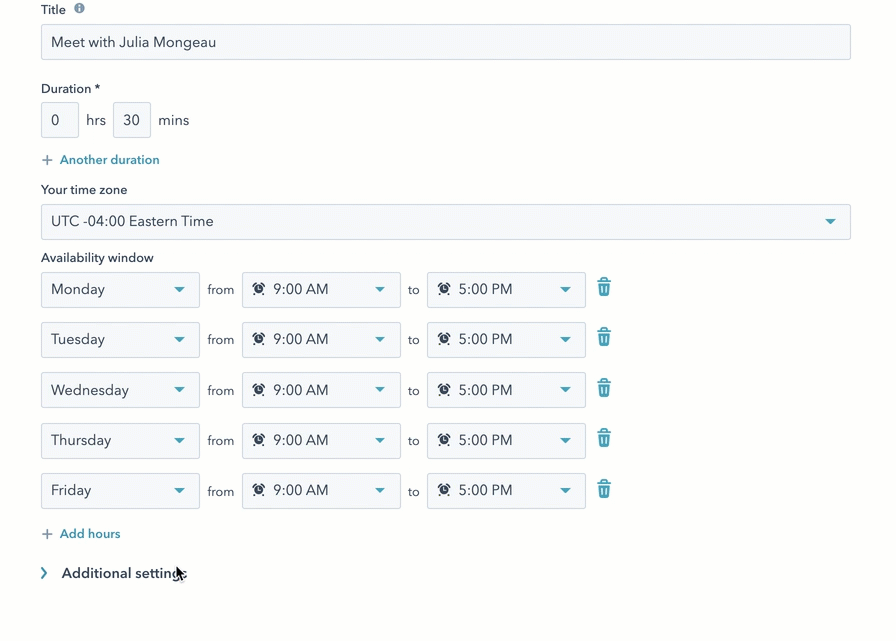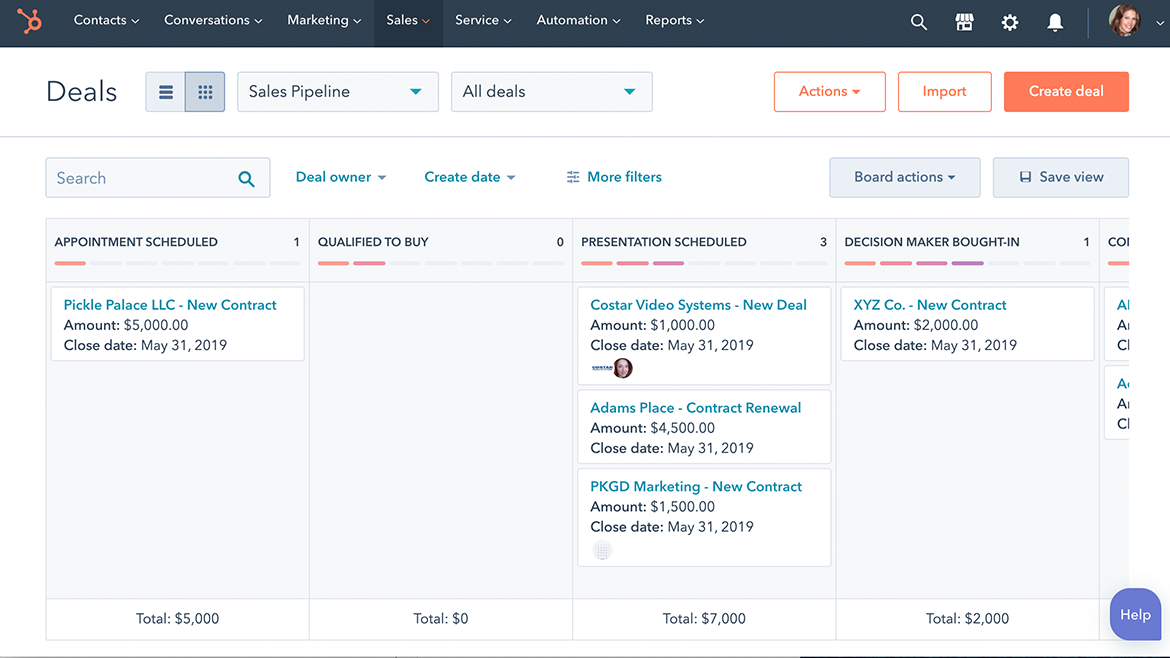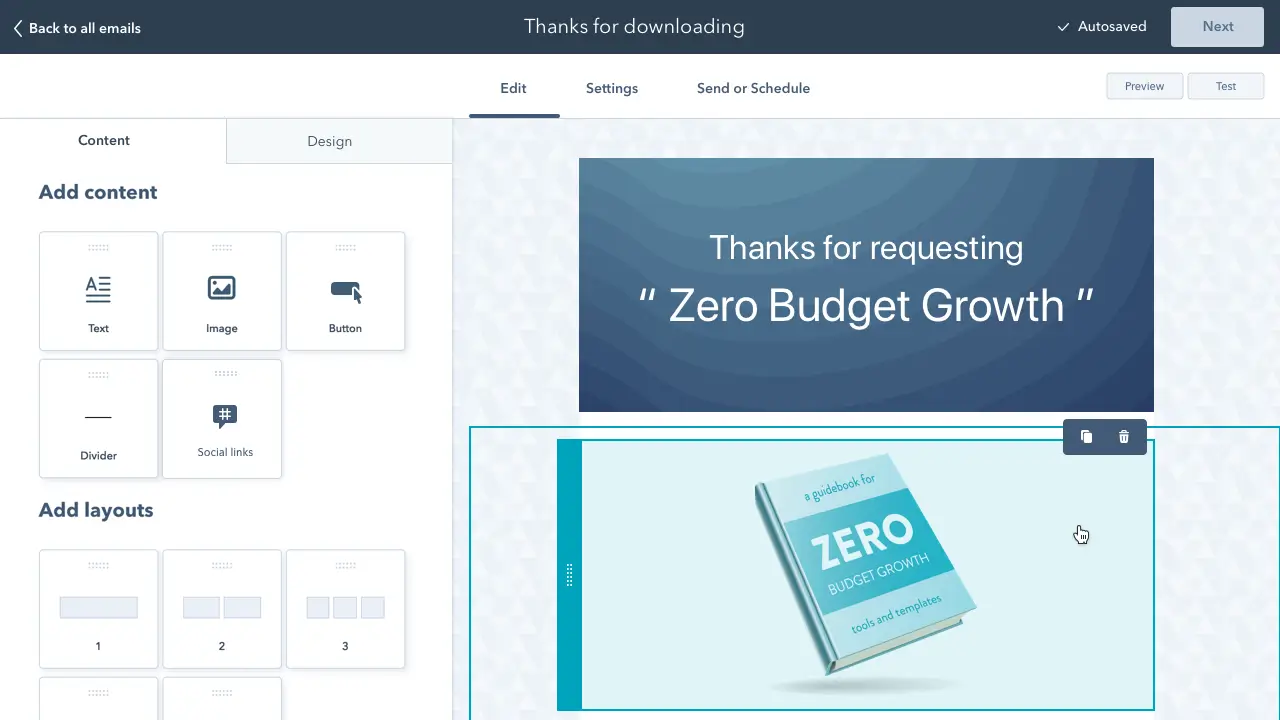A customer relationship management (CRM) system is the backbone of any business. Like any tool, what you get out of it, depends on the effort you put in, and the consistency with which you use it. HubSpot’s CRM is no exception to this rule.
Thanks to HubSpot’s generous inclusion of many additional features in its free CRM software package, learning how to use everything can be overwhelming. We’re here to help you ramp up to pro-level in no time.
Below are 6 helpful tips to get the most out of the free HubSpot CRM tools. Watch the video overview then read on for more details!
HubSpot CRM Pro Tip #1: Educate yourself
HubSpot Academy’s courses are constantly updated, so you don’t have to worry about learning out-of-date information and you can focus on what you need to know now. This course on Setting up your HubSpot CRM for growth is a great place to start.
HubSpot has a Knowledge Base with over 100 articles about the CRM alone. Chances are, other people have had the same questions you have, and HubSpot created a resource for it to help more people get answers fast.
Attend your city’s local HubSpot User Group (HUG) to meet experts and gain in-depth knowledge of specific features and strategies using your software.
We’re also happy to help teach you everything you can do in HubSpot’s CRM. And if you’re ready for even more awesome knowledge, check out the other articles on our blog!
HubSpot CRM Pro Tip #2: Keep your data clean

Garbage in equals garbage out!
If you can’t trust the data in your reports, you’re going to end up using the CRM and related tools less and less over time.
Learn how to input and import your data into the HubSpot CRM correctly the first time and save yourself major clean-up headaches later on.
In addition to the article above, here are a few tips we’ve learned from cleaning up massive HubSpot CRM chaos for our clients:
- Document your company's import expectations and best practices. For example, which properties should be included for every import into the system (e.g. email, first name/last name, phone number, lifecycle stage, Contact Owner.)
- If there are multiple HubSpot users at your company, nominate one person to be your designated HubSpot Admin. This person should be the only user with importing permissions, and they are the person in charge of maintaining a clean database. Importing spreadsheets is the #1 cause of creating a messy CRM, from what we’ve seen. Limiting the importing permission to one knowledgeable person can create less havoc in your database.
- Set up required fields in the “Create Contact” form for manual, one-by-one Contact creation. This way, your team can’t add people to the database unless they include the info you need to do your job (hint: lifecycle stage is a big one for most companies). This can mirror your requirements for import files.
- Create maintenance reminders to keep the database clean, such as:
- Check for and merging duplicate records monthly. Learn how to remove duplicate contacts and companies in your HubSpot CRM.
- Review and/or delete hard bounced email addresses, spam report email addresses, and global unsubscribe emails every month, or after each big email send.
- Set up lists for common issues that arise, to check periodically and fix. This could relate to native HubSpot fields or important custom properties to your business.
HubSpot CRM Pro Tip #3: Connect your inbox and calendar

An overlooked and valuable free feature included in the HubSpot CRM package is the meeting link tool.
One of the first steps we walk new HubSpot clients through is connecting their calendar to HubSpot, so they can set up a meeting link. This way they can quickly schedule calls with their prospects without the back-and-forth conversation about availability. Learn how to connect your calendar to HubSpot, so it knows when you can and cannot book a meeting.
Similar to connecting your calendar, connecting your Gmail or Outlook365 email inbox is another great and often overlooked feature. It allows you to take advantage of HubSpot's tracking and logging features. These tools record your prospect and customer interactions and so you never have to dig through your inbox again. You're also able to see if your recipient has opened your emails.
Furthermore, using the HubSpot extension allows you to use other HubSpot tools like snippets, documents, and templates within your email inbox. You can also send emails directly from HubSpot!
HubSpot CRM Pro Tip #4: Use the sales pipeline tools

The HubSpot CRM sales pipeline tools let you keep track of all your potential sales in progress in an easy-to-use format. The sales pipeline uses the Company and Contact info in HubSpot CRM as well as providing an additional area for notes and activity, and the boards format allows you to have a full view of sales progress at a glance.
Using the boards format of the sales pipeline tool lets you see where deals are currently getting stuck, so you can develop processes to help overcome the hurdles of that stage.
The sales pipeline in HubSpot CRM also allows you to customize the stages of your sales process, including calculating how likely each stage is to progress to a closed deal and the potential revenue that could be earned. This allows you to forecast what sales numbers could be in the future based on the deals currently in progress.
HubSpot CRM’s sales pipeline tools can even report on individual salesperson productivity and entire sales team productivity such as emails sent, calls made, meetings set, and more.
HubSpot CRM Pro Tip #5: Set up reporting

One of the top reasons businesses invest in a CRM is the robust reporting features, especially when compared to simply using Excel spreadsheets to organize your contacts.
HubSpot CRM includes the dashboards tool, which allows you to view up to ten reports at one time. You can customize the dashboard to see only reports that are important and useful for you. Did you know you can also set up an automated email of this dashboard? You could set up the dashboard to send the report via email to yourself or to stakeholders at regular intervals, such as once a week, to allow you to keep a pulse on your business without logging into HubSpot at the time.
Learn more great tips about growing your business using reporting in the HubSpot CRM.
HubSpot CRM Pro Tip #6: Use the Email Sending Tools

Why use a separate CRM and email service provider (ESP) when you could use the same platform for both?
With HubSpot CRM and email marketing tools, you can effortlessly access customer data, create laser-focused segmentation, and craft effective email campaigns. You can gain valuable insights and optimize your entire marketing strategy with comprehensive reporting and analytics. Overall, HubSpot CRM streamlines your operations, allowing you to drive better results with a unified approach.
HubSpot even offers cool features like a drag-and-drop editor and personalization tokens. (Personalization tokens automatically insert data about your Contacts, like their first name, into mass email sends.) Not to mention, HubSpot optimizes your emails for different devices.
HubSpot CRM Pro Tips in Review
- Educate yourself on using the HubSpot CRM correctly and efficiently
- Input and keep your data clean so you can trust your reporting
- Connect your inbox and calendar to access useful meeting and tracking tools
- Take advantage of the sales pipeline tools to make sure opportunities are progressing into customers
- Set up and automate your reporting by creating up custom dashboards
- Take advantage of the marketing email tools with your CRM data
Conclusion
In conclusion, leveraging the free HubSpot CRM tools can greatly enhance your business operations and productivity. By educating yourself through HubSpot Academy courses and utilizing the Knowledge Base, you can become a pro-level user in no time. Keeping your data clean is essential for accurate reporting and effective decision-making. Connecting your inbox and calendar allows for seamless scheduling and tracking of customer interactions. The sales pipeline tools enable you to monitor and forecast sales progress, while the robust reporting features provide valuable insights for business growth. Finally, integrating the email sending tools with your CRM data streamlines your marketing efforts.
So, don't hesitate to dive into the world of HubSpot CRM and take advantage of these powerful tools to propel your business forward. For more tips and guidance, check out the other articles on our blog and reach out to professionals (wink wink) who can assist you in maximizing the benefits of HubSpot CRM.

